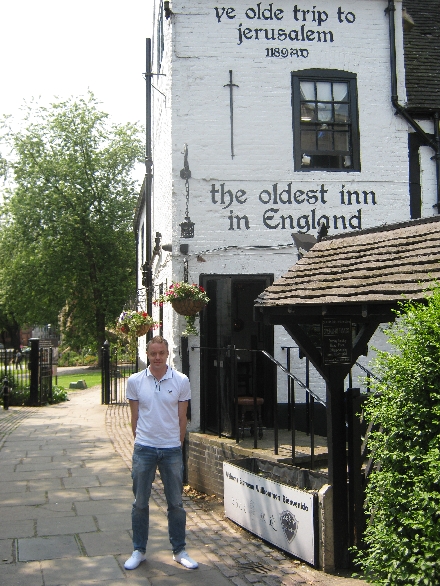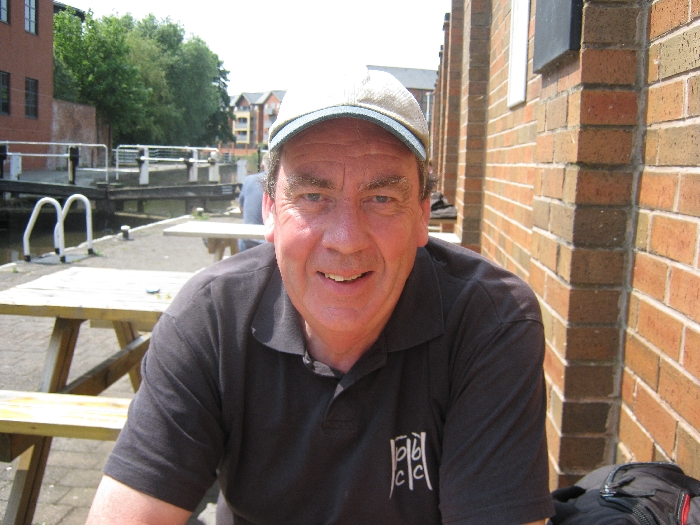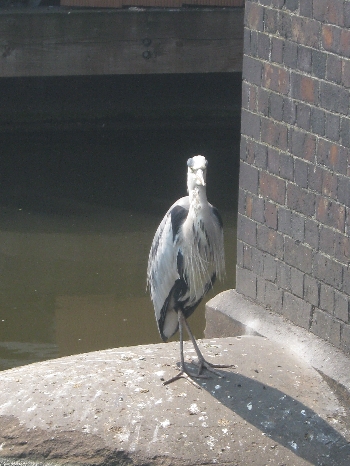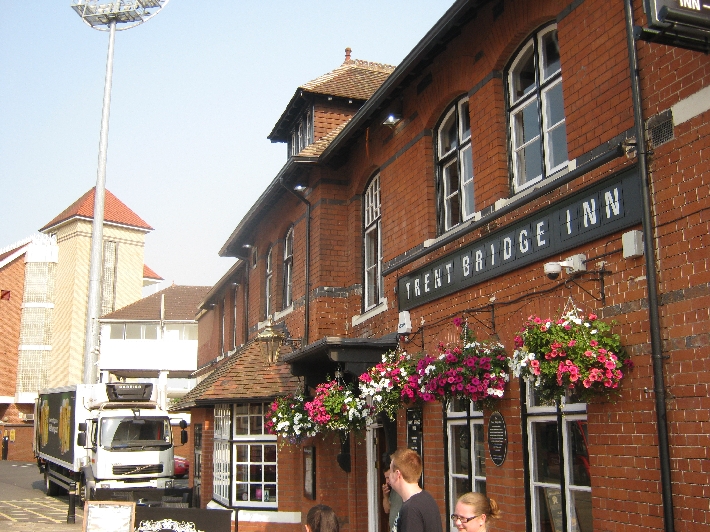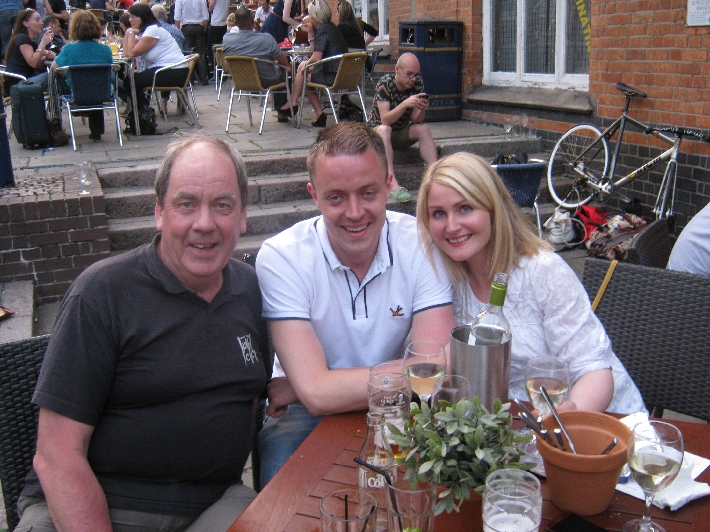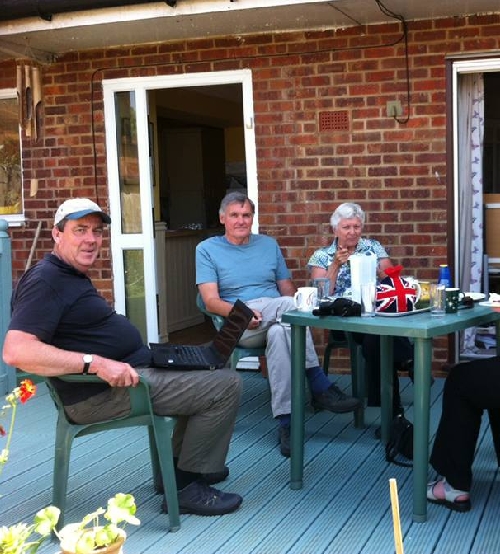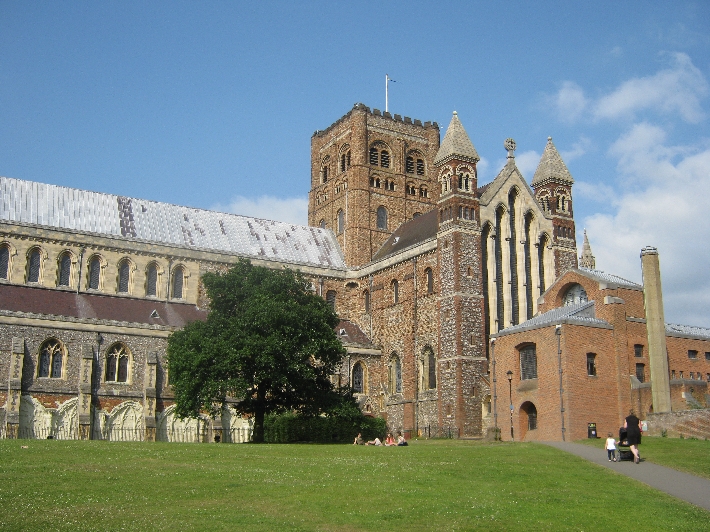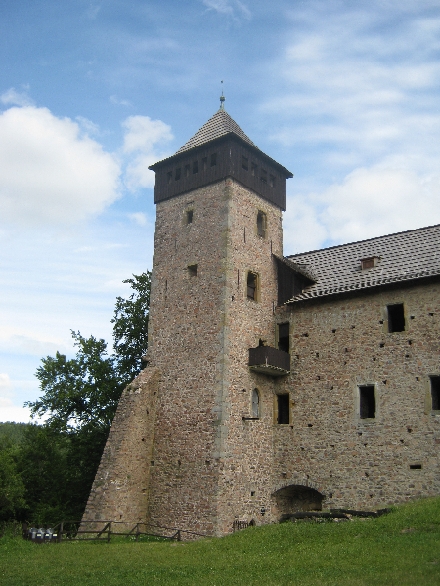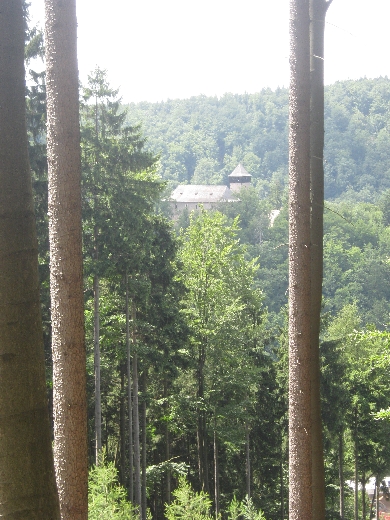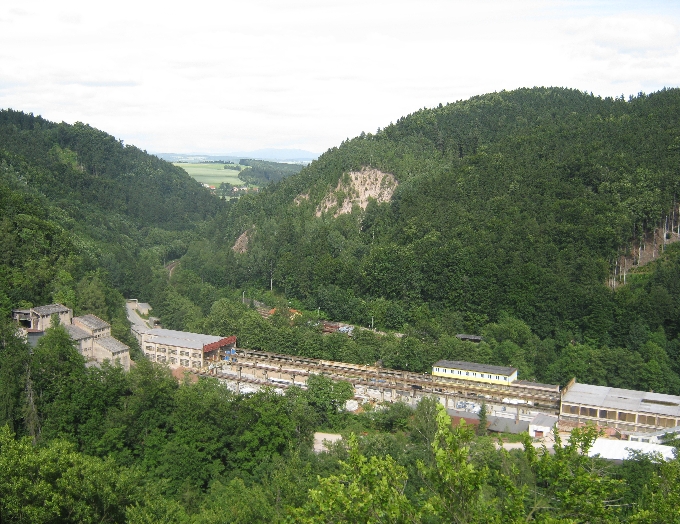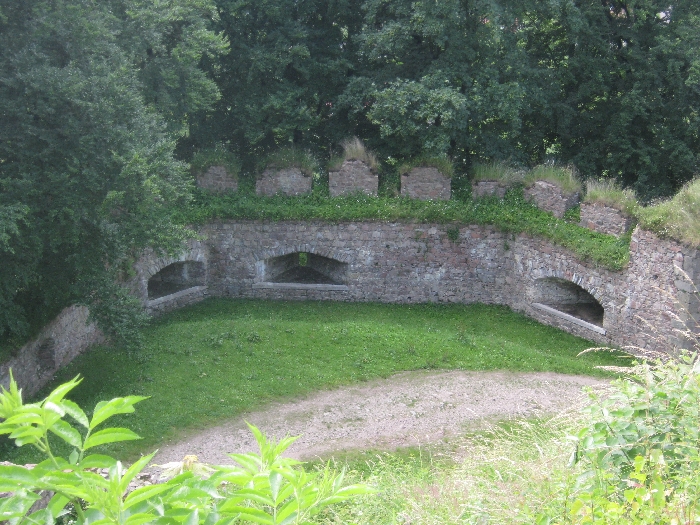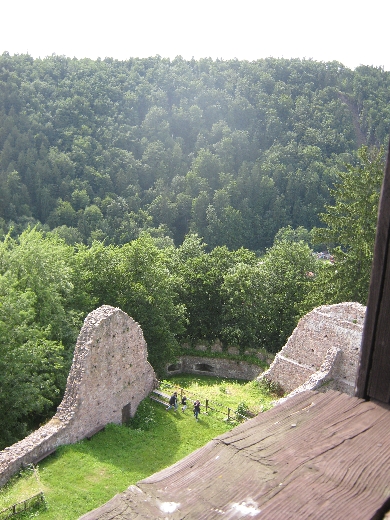
On Monday 29th July, I conducted my first wedding of 2013, when Daniel, the British bridegroom, married Iva, his Czech bride, at Bouzov Castle. The castle lies in the rolling wooded hills of Moravia, about thirty minutes drive north-west of Olomouc.
As long-standing readers of my blog may know, this was not the first time I have conducted a wedding at Bouzov Castle. For I conducted my first-ever wedding in the Czech Republic at this same venue just over four years ago, also between a British bridegroom, Lea, and his Czech bride, Petra. You can read all about it and see the photos, here.
It was finding this post about Lea and Petra’s wedding on my blog, that prompted Daniel to contact me earlier this year, asking if I would be willing and available to conduct their wedding. As with Lea and Petra, Daniel and Iva had met whilst both living in the UK, but were very keen that their wedding should take place near to Iva’s Czech family home. What I really liked about Daniel’s initial email enquiry to me was his declaration that, ‘Faith is an important and growing part of our lives’, and how he then went on to explain that they were attending an Alpha Course being run by their local Anglican Church on the the Staffordshire/Cheshire border, where they currently live.
I was able to meet with Daniel and Iva earlier in February this year, whilst they were visiting Iva’s family, following a week of snowboarding down the Austrian Alps! But a lot of planning for the wedding service has taken place by email, over the past few months. As with both of my English-speaker to Czech weddings in 2012, it was very important to make sure that both the English and Czech speakers could understand and follow the service. So I was most grateful that my friend and Brno service coordinator Katka Bánová, was able and willing to help me on the day.
It has to be said that my journey from Prague to north Moravia, got off to the worst of possible starts. My plan was to drive there, following our Eucharist in Prague on the morning of Sunday 28th July. Daniel had already booked and paid for me to stay overnight in a hotel on the outskirts of Olomouc, where many other guests were also staying in advance of the wedding.
Additionally, I had arranged to drive on further on Sunday afternoon/evening, to Kuncice pod Ondrejnikem, in order to meet a Czech young lady called Dagmar, who currently lives and works in Portsmouth, but was home visiting her family. Dagmar is currently exploring a possible vocation to train for ordained ministry in the Church of England and has been in email contact with me. This was to be our first chance to meet in person, rather than just online.
Therefore, instead of travelling into St. Clement’s from the Chaplaincy Flat by public transport, as we normally do, I instead drove in by car, with all my necessary gear for being away for two nights, to which I was to add my cassock-alb and stole, following the Prague service. Unfortunately, just after crossing the Vltava River and waiting to turn left into Lannova, where it is possible to park the car free-of-charge on a Sunday, the car engine died!
Four police officers kindly pushed the car to a parking place outside the nearby Clarion Hotel and told me to go and ‘take my mass’ 🙂 and then come back to the car afterwards. So I duly did, but was at a total loss as to how I was to then fulfil my commitments both to Dagmar and to Daniel and Iva.
Aided by a member of the congregation and one of the hotel staff, we were able to push the car to a nearby parking place where it was free-of-charge to park until 08.00 on Monday morning. Then, to cut a long story short, I eventually combined my hanging clothes with my cassock-alb and stole over one arm, and put all my other belongings in a bag and carried them in my other hand, and headed by tram to Prague’s main railway station.
All this happened during one of the hottest and most humid periods of weather I have ever experienced in Prague. Therefore on arrival at the railway station, I happily paid CZK 20 (£0.66), to avail myself of a toilet cubicle, in order to change out of my black clerical shirt which was covered in white perspiration stains, into something dryer and more comfortable. I also did get my money’s worth and used the facility for the purpose for which it was primarily intended 🙂
Such are the joys of public transport in the Czech Republic, that even on a Sunday, there is an hourly train service between Prague and Olomouc. Thus I arrived safely in the centre of Olomouc just before 18.00 that evening, and a short taxi journey took me to my hotel. En-route, I texted Dagmar, to apologise for not being able to meet her.
The next morning, I made contact by email and phone, with an English-speaking staff member of our local Renault Garage. He kindly organised a tow truck to pick up the car before it got a parking ticket, and even arranged for the truck to call first at the Chaplaincy Flat, to pick up the spare car key from Sybille. With that all finally sorted, I was then able to concentrate on the wedding.

Katka kindly picked me up from the hotel and drove us both to Bouzov Castle in advance of the rest of the guests who were travelling there by private coach. This gave us plenty of opportunity to talk through how we would conduct the service and sort out all of the practicalities, well in advance of the event. Consequently, the service went extremely smoothly. As with both my English-speaker to Czech weddings in 2012, I had many guests afterwards expressing enjoyment of the service, especially Czech speakers who appreciated all that had been done to ensure they understood and could follow what was being said.

The reception took place under a marquee within the castle courtyard. This was possible because of the wedding taking place on a Monday when the castle is closed to the public. The couple were made to fulfil various Czech marriage traditions, some of which I’ve written about previously. One is the requirement to feed soup to each other from a single bowl, while protected by a sheet. The idea is to encourage cooperation between the newly married couple.

Other traditions are more universal in nature such as cutting the wedding cake. As you can see, not only did Daniel enjoy cutting the cake, he also enjoyed consuming some of it!
Despite all of the hassles I experienced on the Sunday, I still did enjoy being part of Daniel and Iva’s special day. The happy couple are hoping to relocate to the Czech Republic in the not so distant future and have assured me that they want to become part of either the Prague or Brno Anglican congregations.
As for the car, the problem was the failure of the alternator, meaning the engine was no longer charging the battery. Combined with the replacement of both metal straps under the petrol tank, work strongly recommended when the car passed its STK in June, together with being towed, I ended up with a bill for CZK 11,157 (approx £372.00). The better news is that I still managed to meet up with Dagmar, as she came to Prague to see her cousin and we managed a chat over a couple of beers, last Friday evening.

